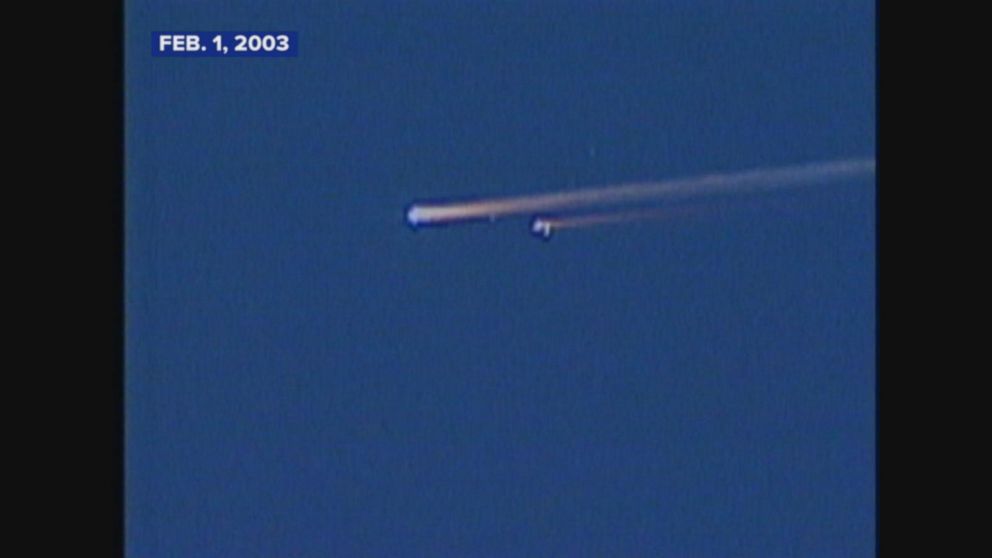

In this same payload were numerous crystal-forming experiments by hundreds of elementary and middle school students from all across the United States. This experiment studied treatments for cancer, and the micro-encapsulation experiment part of the payload was completely recovered, increasing from 0% data to 90% data after recovering the samples fully intact for this experiment. NASA recovered a commercial payload, Commercial Instrumentation Technology Associates (ITA) Biomedical Experiments-2 (CIBX-2), and ITA was able to increase the total data saved from STS-107 from 0% to 50% for this payload. Scientists and engineers were able to recover 99% of the data for one of the six FREESTAR experiments, Critical Viscosity of Xenon-2 (CVX-2), that flew unpressurized in the payload bay during the mission after recovering the viscometer and hard drive damaged but fully intact in the debris field in Texas. Ībout 5-6 Columbia payloads encompassing many experiments were successfully recovered in the debris field. Around 5-10% more data was saved and collected through recovering samples and hard drives intact on the ground after the Space Shuttle Columbia disaster, increasing the total data of saved experiments despite the disaster from 30% to 35-40%. NASA estimated that 30% of the total science data was saved and collected through telemetry back to ground stations. Shuttle Ionospheric Modification with Pulsed Local Exhaust Experiment (SIMPLEX)īecause much of the data was transmitted during the mission, there was still large return on the mission objectives even though Columbia was lost on re-entry.Shuttle Ozone Limb Sounding Experiment (SOLSE-2).Mediterranean Israeli Dust Experiment (MEIDEX).Miniature Satellite Threat Reporting System (MSTRS).

Combined Two-Phase Loop Experiment (COM2PLEX),.18 payloads NASA's Office of Biological and Physical Research (OBPR) with 23 investigations.4 payloads for the European Space Agency with 14 investigations.9 commercial payloads with 21 investigations,.Major experiments Įxamples of some of the experiments and investigations on the mission. Īn Australian experiment, created by students from Glen Waverley Secondary College, was designed to test the reaction of zero gravity on the web formation of the Australian garden orb weaver spider. Ramon also traveled with a dollar bill received from the Lubavitcher Rebbe. The copy was in the possession of Ilan Ramon and was lost in the disintegration. On board Columbia was a copy of a drawing by Petr Ginz, the editor-in-chief of the magazine Vedem, who depicted what he imagined the Earth looked like from the Moon when he was a 14-year-old prisoner in the Terezín concentration camp. On the day of the experiment, a video taken to study atmospheric dust may have detected a new atmospheric phenomenon, dubbed a "TIGER" (Transient Ionospheric Glow Emission in Red). STS-107 carried the SPACEHAB Double Research Module on its inaugural flight, the Freestar experiment (mounted on a Hitchhiker Program rack), and the Extended Duration Orbiter pallet. However, the damage on STS-27 occurred at a spot that had more robust metal (a thin steel plate near the landing gear), and that mission survived the re-entry. The damage to the thermal protection system on the wing was similar to that Atlantis had sustained in 1988 during STS-27, the second mission after the Space Shuttle Challenger disaster. The cockpit window frame is now exhibited in a memorial inside the Space Shuttle Atlantis Pavilion at the Kennedy Space Center. During re-entry the damaged wing slowly overheated and came apart, eventually leading to loss of control and disintegration of the vehicle. The source of the failure was determined to have been caused by a piece of foam that broke off during launch and damaged the thermal protection system ( reinforced carbon-carbon panels and thermal protection tiles) on the leading edge of the orbiter's left wing. Immediately after the disaster, NASA convened the Columbia accident Investigation Board to determine the cause of the disintegration. The disaster occurred during reentry while the Columbia was over Texas. The crew conducted a multitude of international scientific experiments. It spent 15 days, 22 hours, 20 minutes, 32 seconds in orbit. The flight launched from Kennedy Space Center in Florida on January 16, 2003. It was the 88th post- Challenger disaster mission. The mission ended, on February 1, 2003, with the Space Shuttle Columbia disaster which killed all seven crew members and destroyed the space shuttle. STS-107 was the 113th flight of the Space Shuttle program, and the 28th flight of Space Shuttle Columbia.


 0 kommentar(er)
0 kommentar(er)
